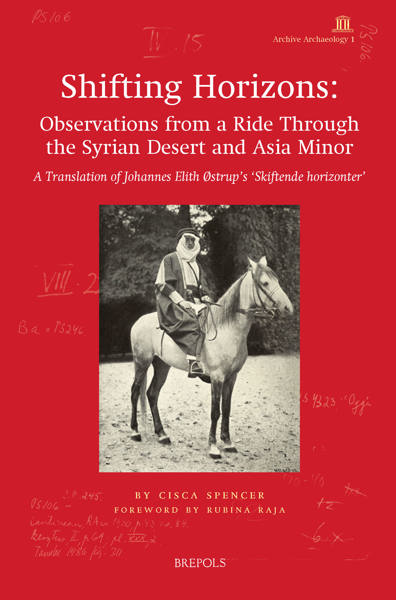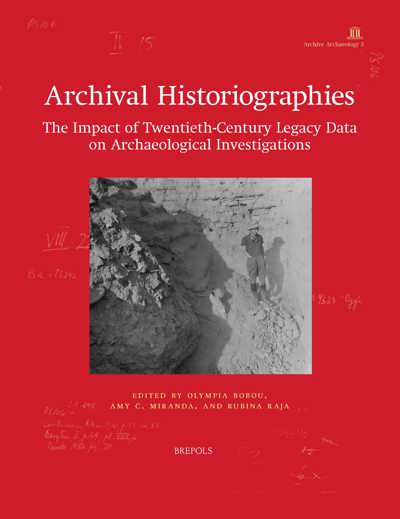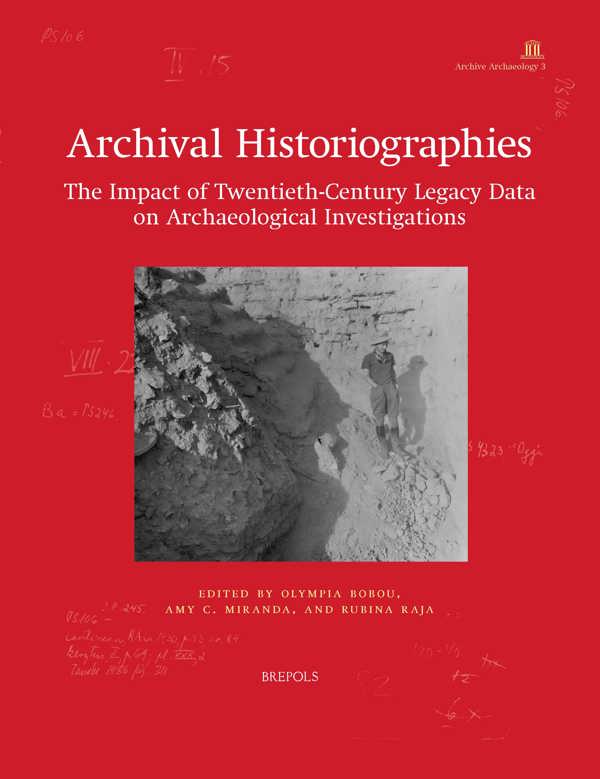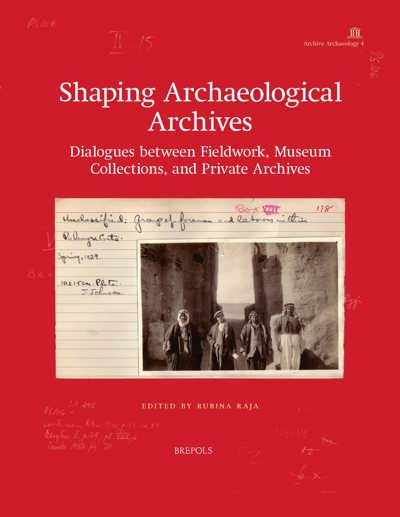
Archival Historiographies
The Impact of Twentieth-Century Legacy Data on Archaeological Investigations
Olympia Bobou, Amy C. Miranda, Rubina Raja (eds)
- Pages: xii + 180 p.
- Size:216 x 280 mm
- Illustrations:142 b/w, 4 col., 1 tables b/w., 2 maps b/w
- Language(s):English
- Publication Year:2022
- € 75,00 EXCL. VAT RETAIL PRICE
- ISBN: 978-2-503-60018-5
- Paperback
- Available
- € 75,00 EXCL. VAT RETAIL PRICE
- ISBN: 978-2-503-60019-2
- E-book
- Available
Olympia Bobou is an assistant professor at Aarhus University and participates in the Circular Economy project, which is headed by professor and centre director Rubina Raja.
Amy Miranda is a post-doctoral fellow in the project Archive Archaeology, which is headed by professor and centre director Rubina Raja.
Rubina Raja is a Professor and centre director of the Danish National Research Foundation Centre of Excellence, Centre for Urban Network Evolutions.
Archives held in institutions around the world hold a wealth of material but traditionally, the fields of Classical and ancient Near Eastern archaeology have been slow to make use of such legacy data in their investigations. In recent years, however, this trend has begun to change, and scholars increasingly recognize the importance of archival material to their research. Drawing directly on these trends, this volume offers the first in-depth analysis of what it means to engage in archive archaeology and how it can influence understandings of both the ancient world and the recent past. Excavation historiographies and the formation of archaeological archives in the twentieth century are investigated in locations from across the Eastern Mediterranean and the Middle East, with current understanding of sites such as Dura Europos or Palmyra being fundamentally reassessed in the light of the archival material. Crucially, the volume contributions gathered here look to the future as well as to the past: archives are acknowledged as essential to cultural heritage preservation and restitution initiatives, and chapters explore best practices, as well as presenting some of the manifold potentials of archive and legacy data to future research.
List of Illustrations
1. Introduction
OLYMPIA BOBOU, AMY MIRANDA, and RUBINA RAJA
2. Going Backwards to Move Forwards: Archive Archaeology and the Provenance of the Pottery from the House of the Frescoes at Knossos
EMILIA ODDO
3. Herbert J. Gute and the Yale-French Excavations at Dura-Europos
LISA R. BRODY
4. Digital Archaeological Archives 2.0: Answering Past Critiques with Linked Open Data (LOD)
ANNE HUNNELL CHEN
5. The Gerasa Archives at the Yale University Art Gallery: Exploring the Archives of the Anglo-American Excavations of 1928–1930 and 1930–1934
LISA BRODY and RUBINA RAJA
6. Harald Ingholt’s Fieldwork Diaries: Legacy Data of the Early Twentieth Century
RUBINA RAJA and JULIA STEDING
7. The Ingholt Archive: The Impact of Archives on Palmyrene Studies and Syrian Cultural Heritage Preservation
AMY MIRANDA and RUBINA
8. Perspectives on Funerary Sculpture from Roman Palmyra through the Harald Ingholt Archive
DITTE KVIST JOHNSON and AMY MIRANDA
9. Digital Treatment of Paul Collart’s Archives on the Temple of Baalshamîn: Challenges and Results (2018–2021)
PATRICK M. MICHEL
10. Archive Archaeology at the Forschungsstelle Asia Minor, University of Münster: The Untapped Potential of the Dörner Archive
MICHAEL BLÖMER and EMANUELE E. INTAGLIATA
11. The Site of the Archive: Responsibility and Rhetoric in Archival Archaeology of the Middle East
J. A. BAIRD
Index.




